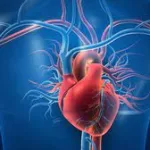University of California San Diego Study Isolates Positive Effects of TZD Drugs
In a promising turn for type 2 diabetes treatment, researchers at the University of California San Diego School of Medicine have uncovered a potential breakthrough. Their study, published in Nature Metabolism, delves into Thiazolidinediones (TZDs), a class of drugs once sidelined due to significant side effects. The research focuses on isolating the positive impacts of these drugs, potentially opening doors to new treatments devoid of the adverse reactions.
TZDs, recognized for their ability to counter insulin resistance, a hallmark of type 2 diabetes, garnered significant attention in the late 20th and early 21st centuries. However, their popularity waned as clinicians uncovered unwanted side effects such as weight gain and fluid retention.
Lead researcher Jerrold Olefsky, M.D., emphasized the critical role TZDs play in addressing insulin resistance, the root cause of type 2 diabetes. “For decades, TZDs have been the only drugs we have that can reverse insulin resistance, but we seldom use them anymore because of their side effects profile,” noted Dr. Olefsky, a professor of medicine at UC San Diego Health Sciences.
The study elucidates how TZD drugs operate at the molecular level, with a focus on their interaction with the exosome system. Exosomes, small particles released by immune cells, play a pivotal role in transmitting instructions to surrounding tissues, contributing to metabolic changes associated with obesity and insulin resistance.
By treating obese mice with rosiglitazone, a type of TZD drug, researchers observed increased insulin sensitivity alongside weight gain and fluid retention, common side effects of the drug. However, by isolating exosomes from the treated mice and administering them to untreated mice, they replicated the positive effects of rosiglitazone without the adverse reactions.
Dr. Olefsky highlighted the significance of this discovery: “The exosomes were just as effective in reversing insulin resistance as the drug itself but without the same side effects.” Further analysis identified a specific microRNA, miR-690, responsible for the beneficial metabolic effects of rosiglitazone.
While utilizing exosomes directly as a treatment may pose challenges, understanding the molecular mechanisms underlying their effects opens avenues for drug development. “Learning what drives the beneficial effects of exosomes at the molecular level makes it possible to develop drugs that can mimic these effects,” explained Dr. Olefsky.
The potential of microRNAs as therapeutic agents also holds promise. “There’s plenty of precedent for using microRNAs themselves as drugs, so that’s the possibility we’re most excited about exploring for miR-690 going forward,” Dr. Olefsky added.
With obesity affecting over 40% of Americans and significant economic implications, the quest for effective, side effect-free diabetes treatments remains urgent. The UC San Diego study offers a glimpse of hope, pointing towards a future where TZD-derived therapies could transform the landscape of type 2 diabetes management.










